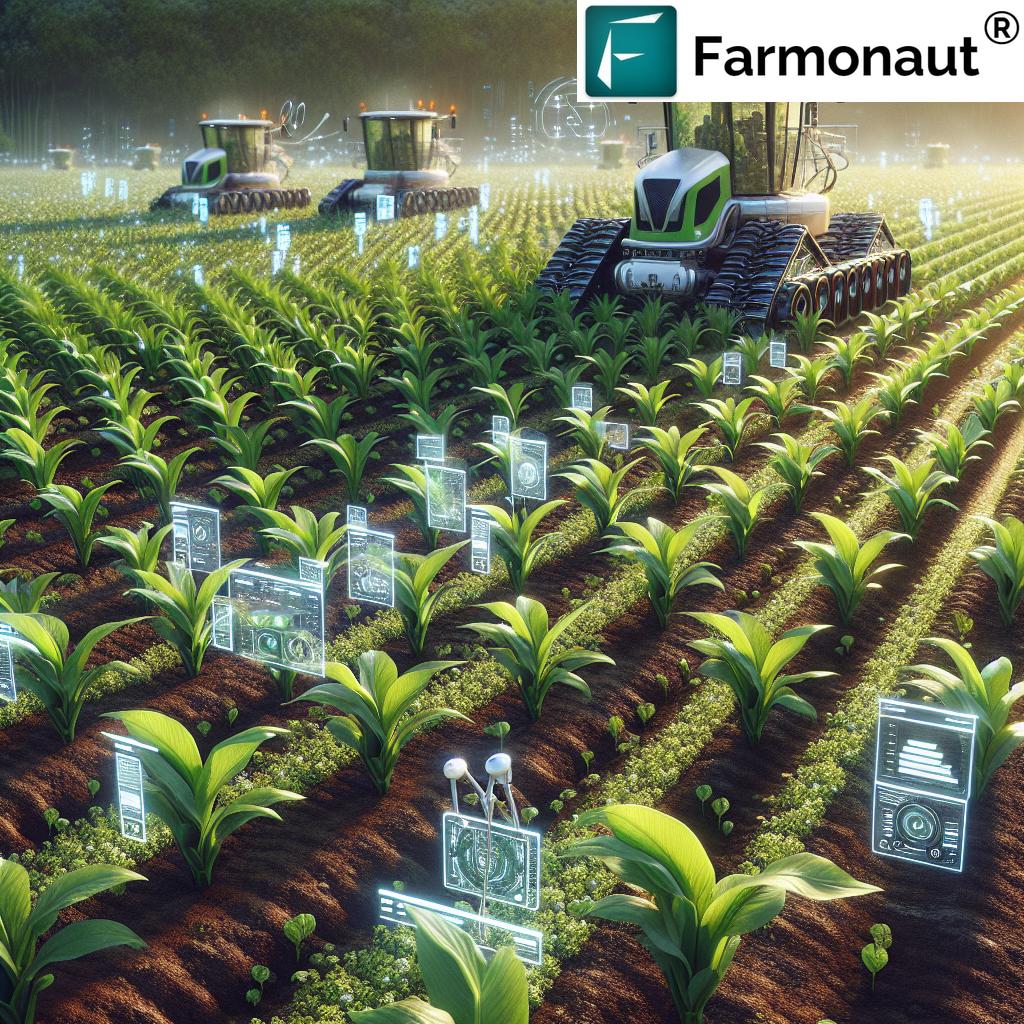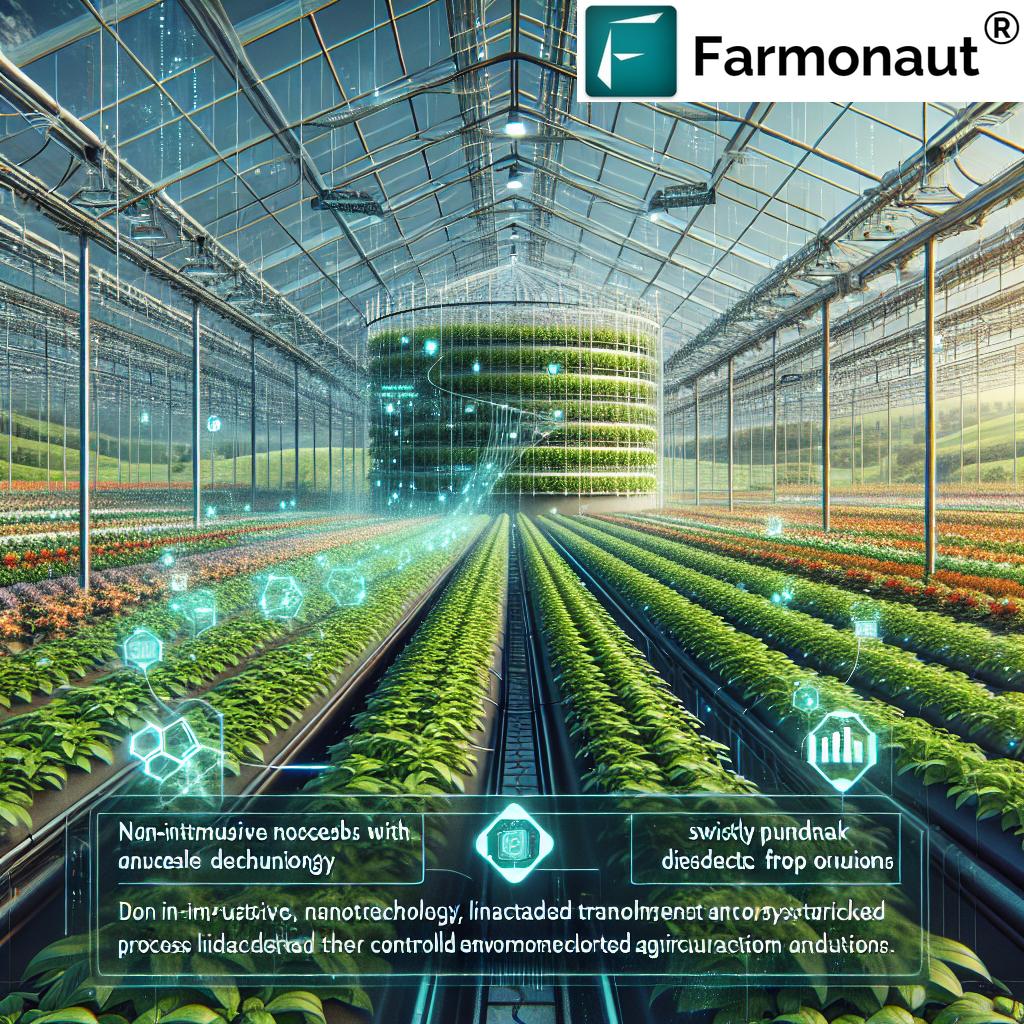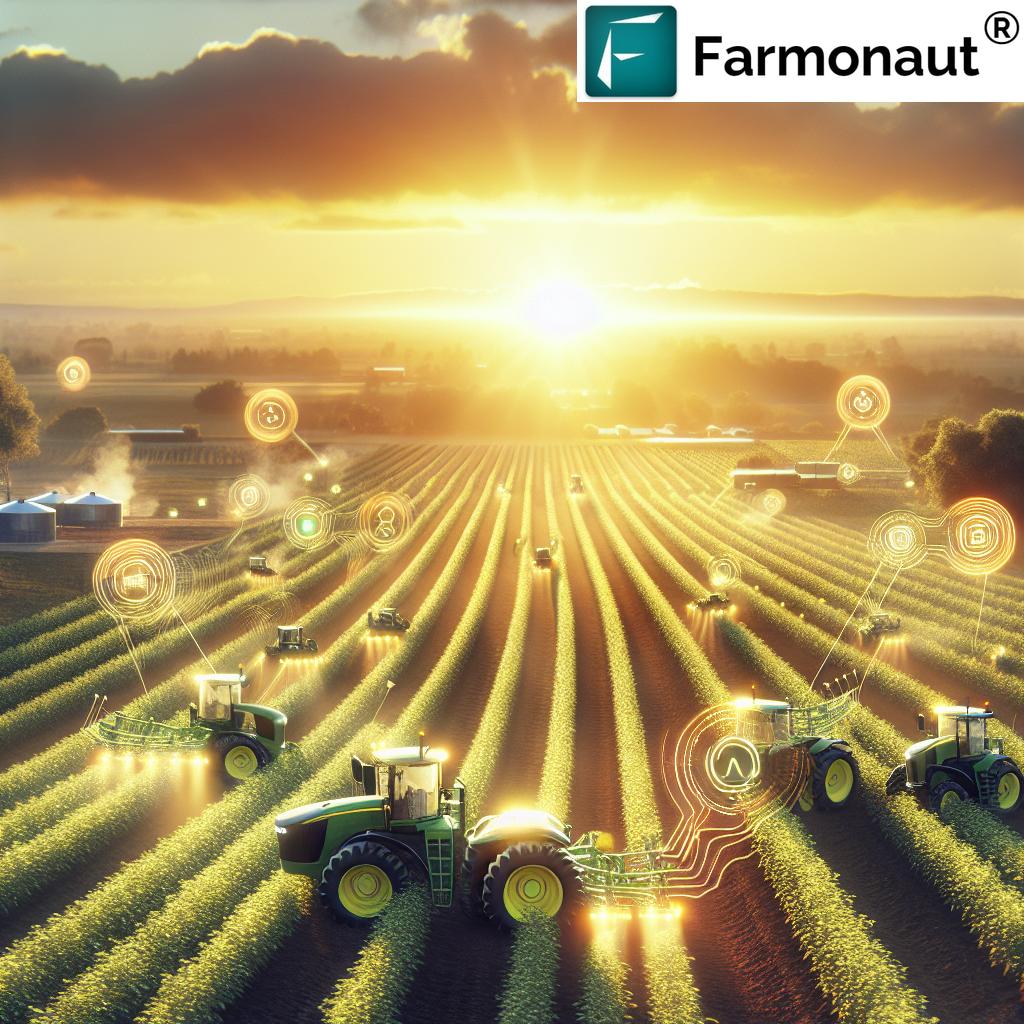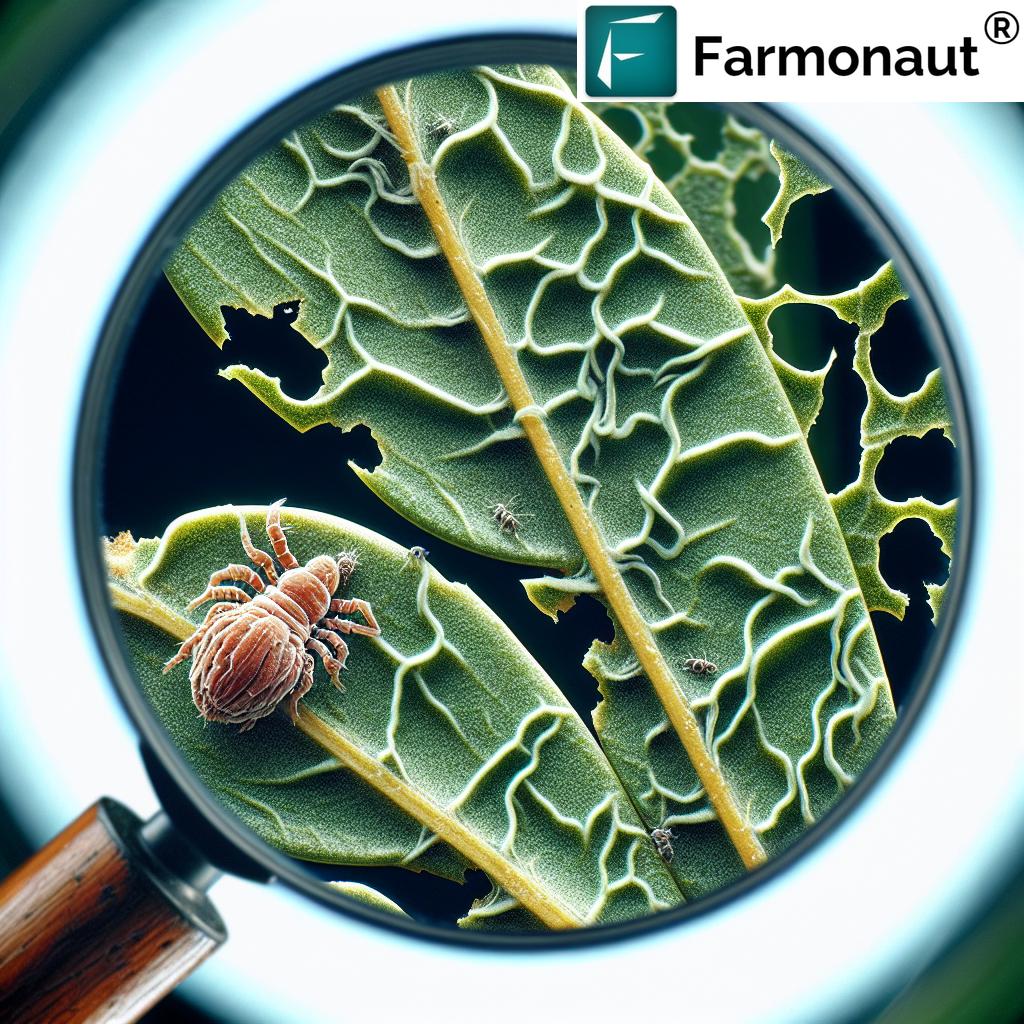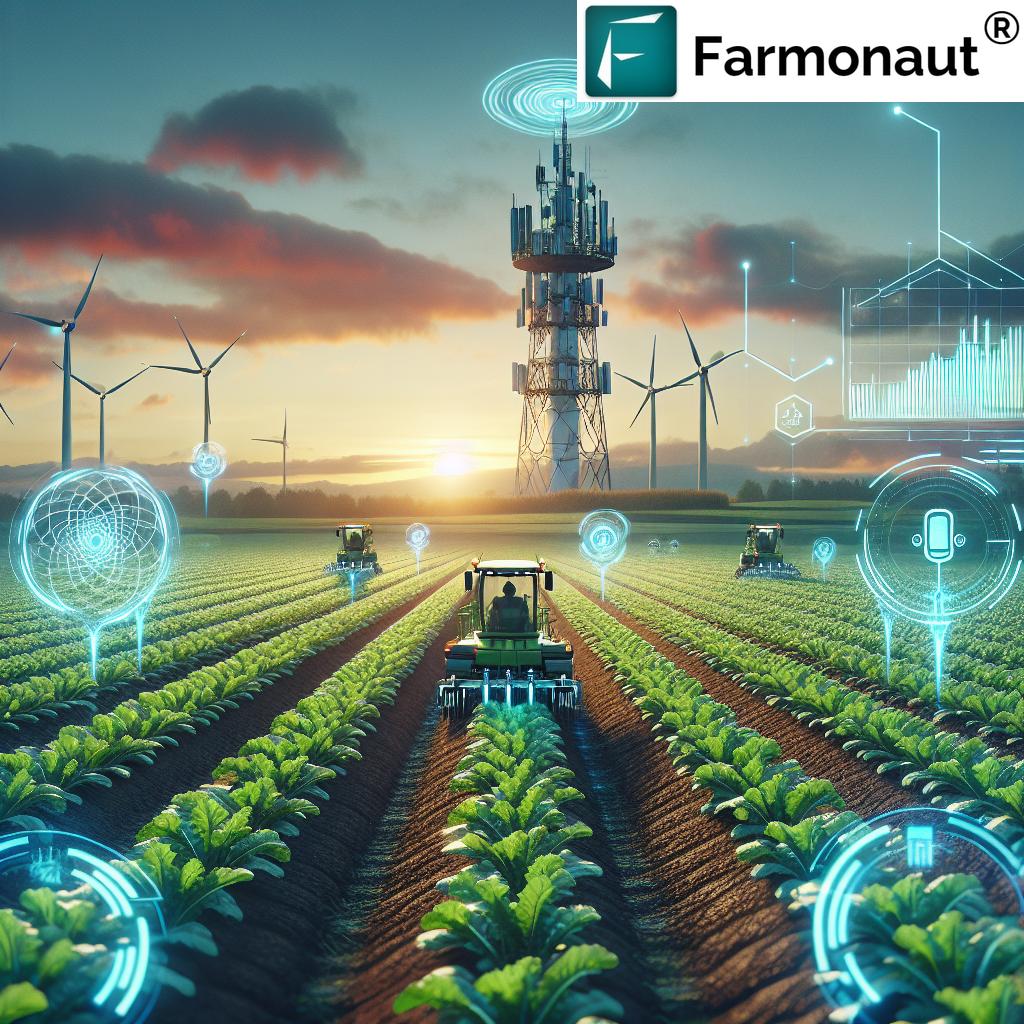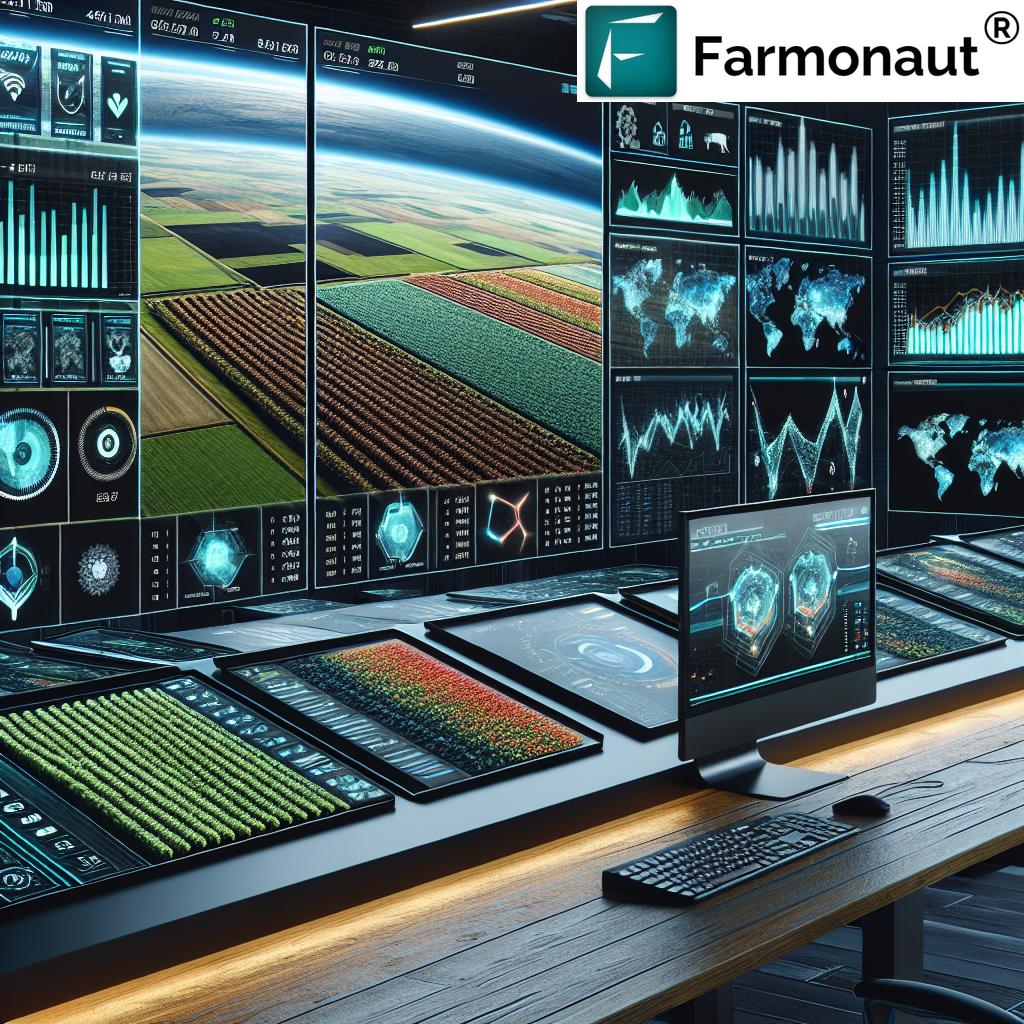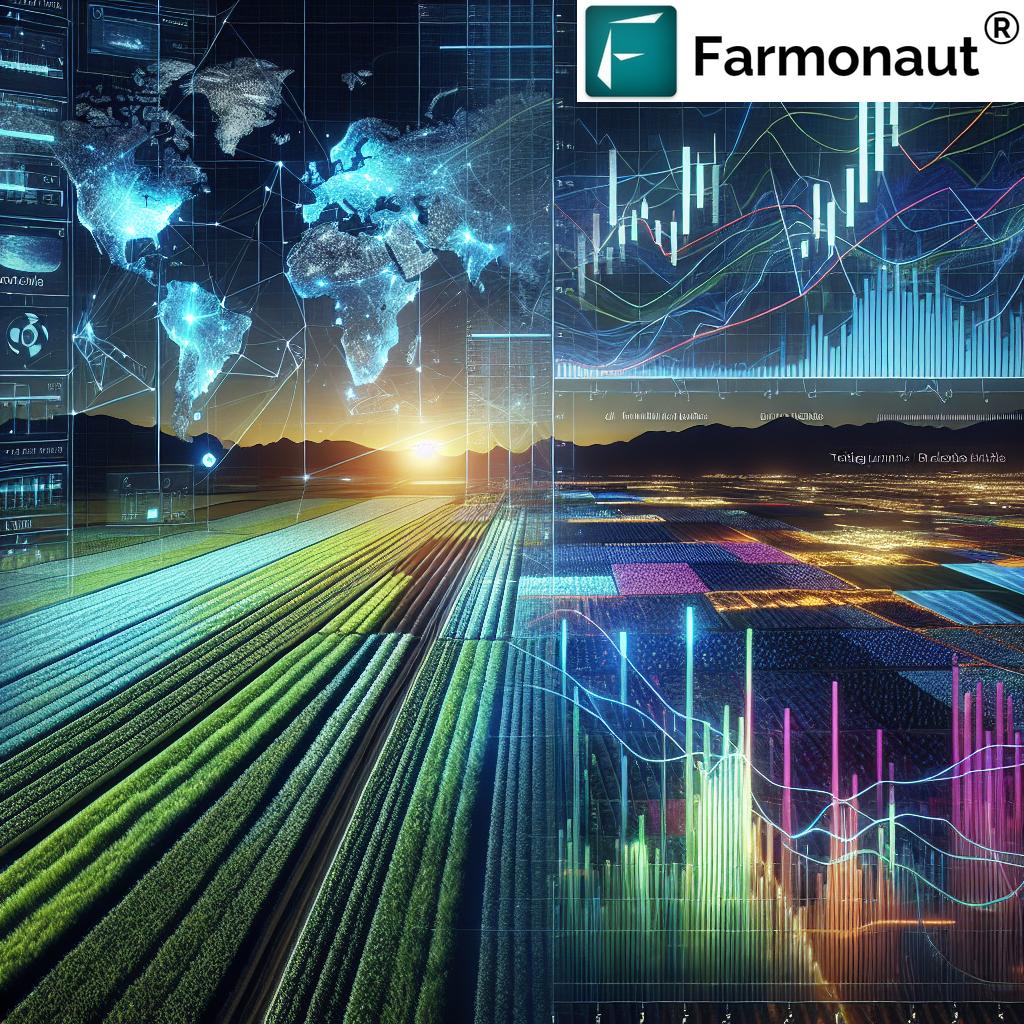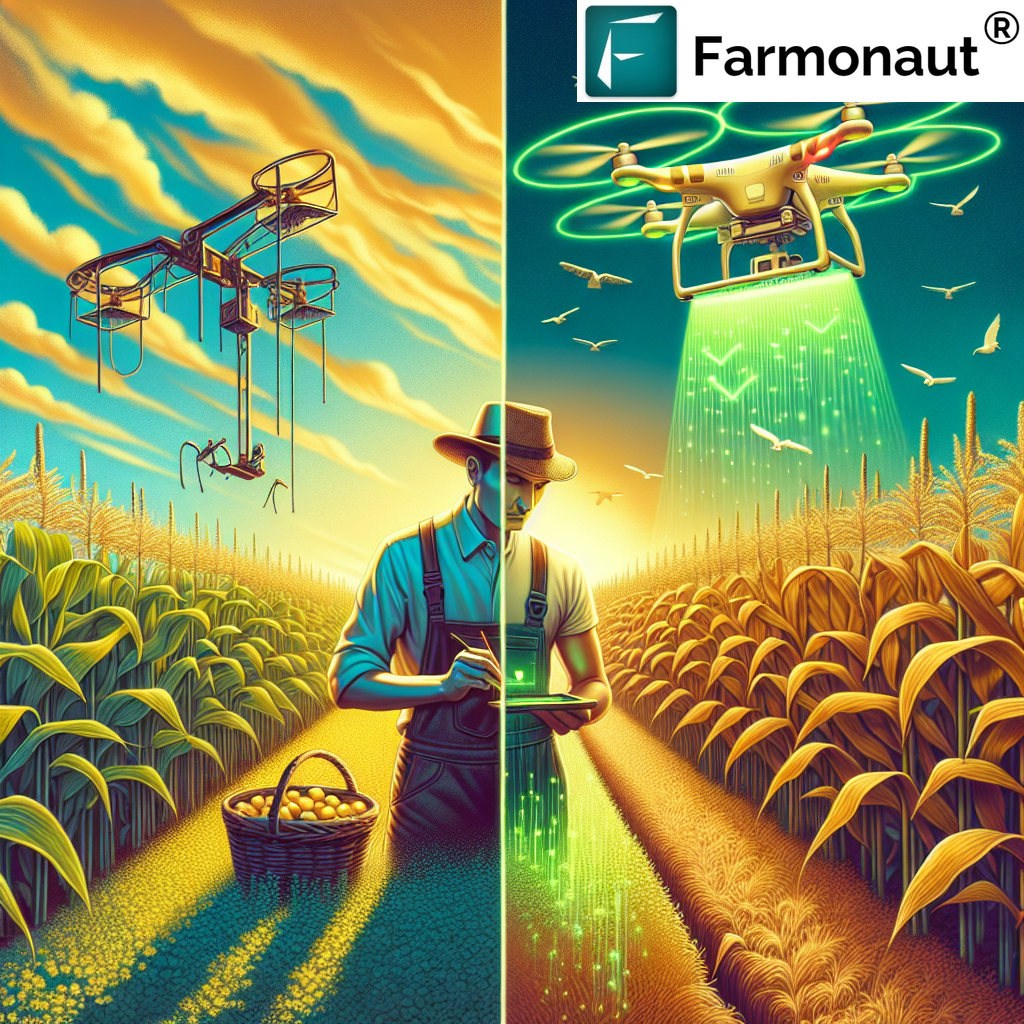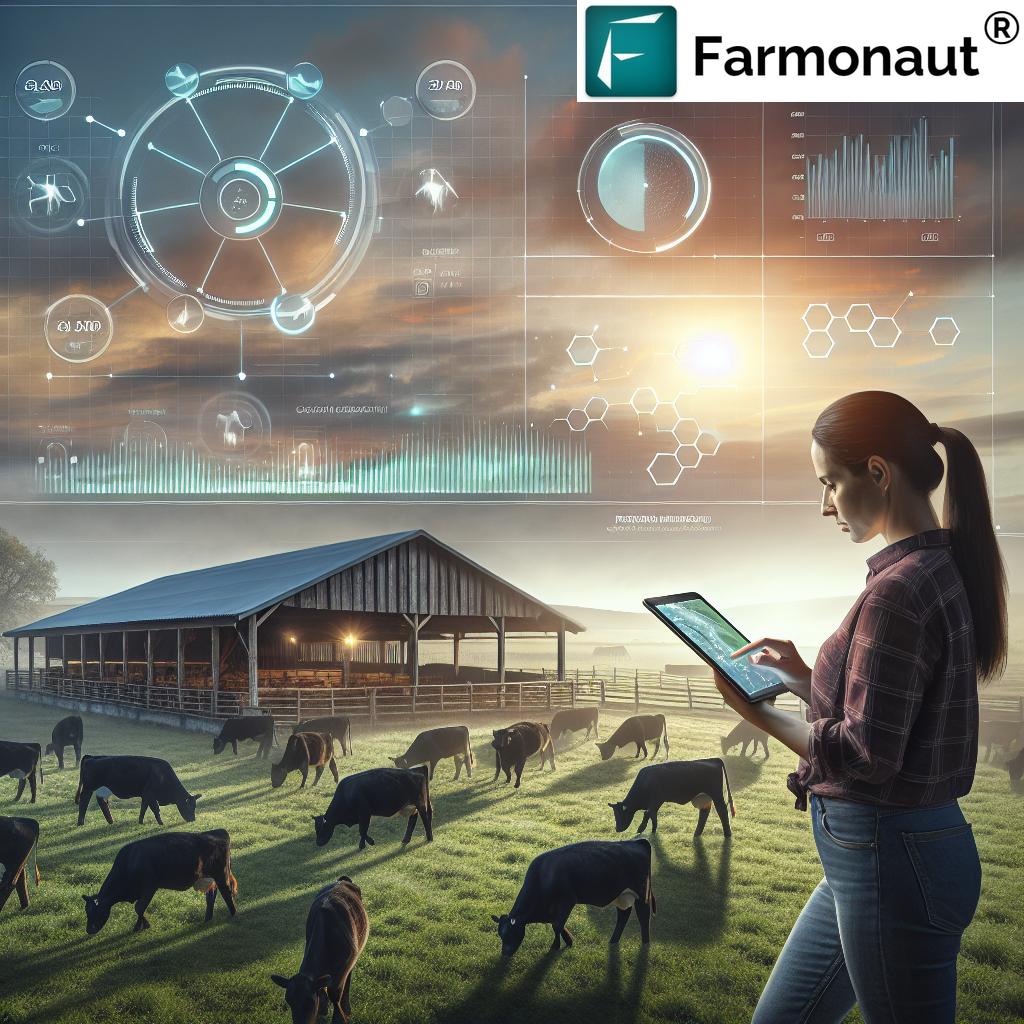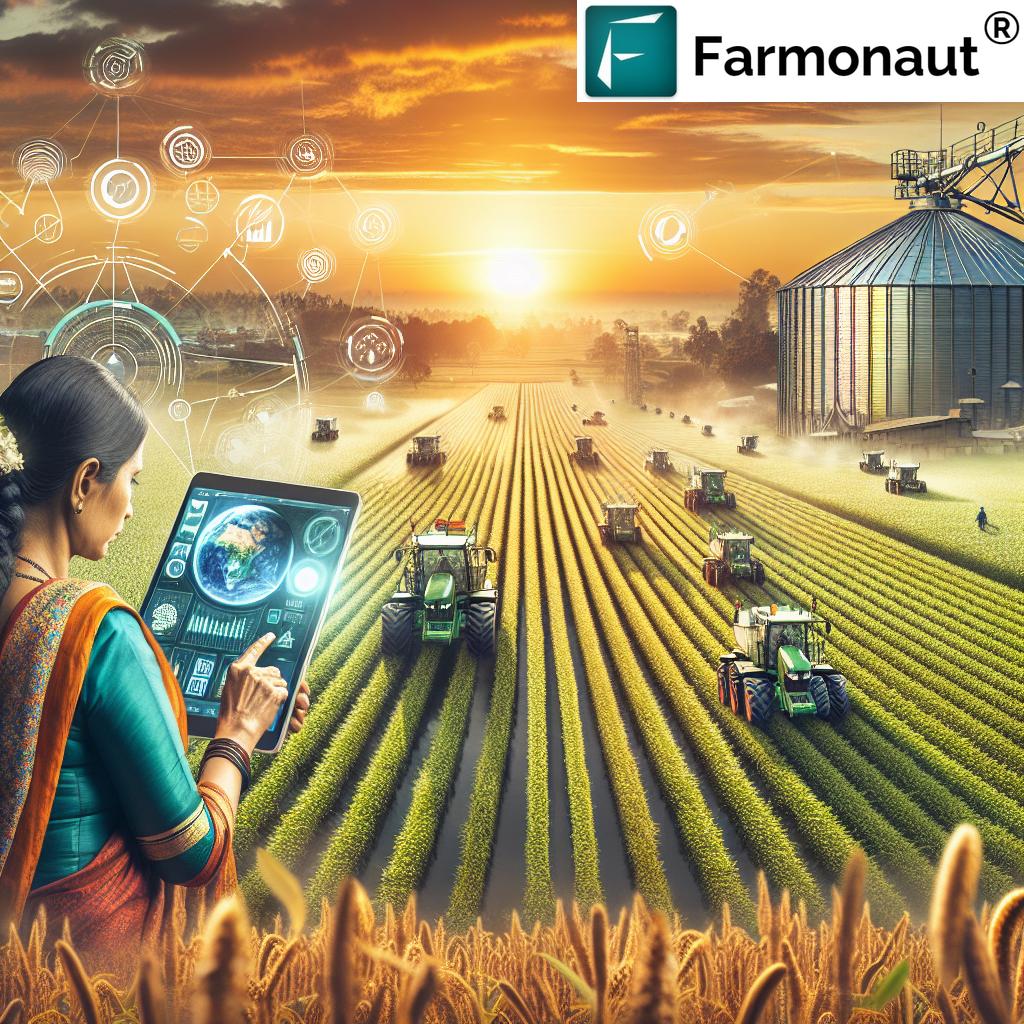Agriculture Tech Secrets: 10 Proven Ways to Boost Yields
- Agricultural Technology (AgTech) Innovations: Introduction
- 1. Precision Agriculture: Data-Driven Field Management
- 2. Autonomous Farming Machinery: Boosting Efficiency and Reducing Labor
- 3. Drones in Agriculture: Aerial Monitoring and More
- 4. Artificial Intelligence in Agriculture: Turning Big Data into Action
- 5. Controlled Environment Agriculture (CEA) & Aeroponics: Maximizing Production
- 6. Precision Livestock Farming (PLF): Improving Animal Welfare and Productivity
- 7. Nanotechnology in Agriculture: Tiny Tools, Big Impact
- 8. Blockchain in Agriculture Supply Chain: Transparency & Trust
- 9. Agricultural Robots (Agribots): Automating the Future
- 10. Internet of Things in Farming: Smart Sensors and Connected Devices
- Bonus: Genetic Engineering and CRISPR in Agriculture
- Comparison Table: 10 Proven Agri-Tech Methods
- Farmonaut: Affordable Precision Agriculture Anywhere
- Frequently Asked Questions (FAQ)
- Conclusion
Agricultural Technology Innovations: Unlocking Sustainable Crop Productivity
In today’s rapidly changing world, agriculture faces immense challenges—from population growth and climate change to resource scarcity and pressure on food security. How can we, as a global collective, rise to meet these demands for higher yield and sustainability? The answer lies in leveraging the power of agricultural technology innovations—especially precision agriculture, AI-powered analytics, autonomous machinery, and IOT-powered devices.
The field of AgTech has exploded with solutions that help us monitor, manage, and ultimately boost productivity in both farming and forestry. These tools not only target efficiency, but also promote sustainability and resource conservation—making smarter decisions for our soil, crops, water, and planet. From using satellite data to optimize fertilization to enabling farm management solutions through real-time insights, the possibilities are endless.
In this comprehensive guide, we’ll unveil 10 proven ways technology transforms every corner of modern farming—from planting and irrigation to supply chain traceability and genetic improvement. As we’ll see, companies like Farmonaut are at the forefront of making such technology accessible for all—empowering farmers, agribusinesses, and entire communities. Let’s begin our journey toward efficient, sustainable, and high-yield farming.
1. Precision Agriculture: Data-Driven Field Management for Maximum Yields
Precision agriculture sits at the heart of today’s most significant agricultural technology innovations. By using GPS, sensors, and advanced data analytics, we can monitor field-level variations in soil conditions, moisture, nutrients, weather patterns, and crop health. This enables precise management—only applying water, fertilizer, or pesticides where and when they are truly needed.
- What It Means: Mapping soil nutrient levels, tracking weather shifts, and monitoring crop stress—down to specific patches—in real time.
- Impact on Yield: By delivering tailored interventions, we can boost production by optimizing inputs (seeds, chemicals, water, labor) and reducing waste.
- Sustainability: Using fewer chemicals and minimizing water waste helps improve environmental outcomes for farms worldwide.
For example, Farmonaut’s platform delivers satellite-based crop health monitoring, offering reports on vegetation health indices (like NDVI), soil moisture, and other vital statistics, directly from your phone or browser. These insights empower better decisions for fertilization, irrigation, and pest management.
Key Benefits of Precision Agriculture:
- Higher yields: Targeted use of water, fertilizer, and pesticides maximizes returns per hectare.
- Resource conservation: Saves money and lowers environmental impact.
- Faster reaction: With near real-time data, we can immediately respond to emerging crop health threats.
Did you know? With Farmonaut’s Carbon Footprinting, you can monitor and minimize the environmental impact of your farming operations, providing critical data for sustainability and compliance.
2. Autonomous Farming Machinery: Boosting Efficiency and Reducing Labor
As labor shortages rise globally, autonomous machinery—including self-driving tractors, seeding robots, and robotic harvesters—are redefining how we plant, nurture, and collect our crops. Combining AI-driven software, high-accuracy GPS, and smart machine vision, these tools deliver precision and consistency 24/7, far beyond what manual labor alone can achieve.
- Efficient planting and harvesting: Machines work tirelessly, reducing delays and capturing ideal crop windows for maximum yield.
- Reduced compaction & damage: By staying on optimal paths, soil compaction and accidental crop damage are minimized, protecting soil structure.
- Lower labor costs: Automation addresses rising costs and scarcity of skilled agricultural workers.
Some advanced autonomous farming machinery now interfaces with decision-support systems, harnessing data from sensors and satellites to guide precise operations—further increasing efficiency and reducing resource waste.
Farmonaut’s Fleet Management solutions offer farm businesses a centralized platform for monitoring and optimizing their machinery usage and fuel consumption. This lowers costs and makes large-scale adoption of robotics more accessible for any farming operation.
3. Drones in Agriculture: Aerial Monitoring and More
Drones in agriculture give us a “bird’s-eye” view like never before. They’re equipped with multispectral and thermal sensors, capturing data on:
- Crop health (NDVI, EVI, etc.)
- Soil moisture and drainage patterns
- Pest infestations and disease outbreaks
- Growth progress and harvest readiness
With precision, drones can apply inputs (like pesticides or fertilizers) only where needed, reducing costs and environmental chemical waste. Their speed and scale allow for rapid scouting of large fields—often in minutes rather than days.
- Pest detection: Advanced imaging helps us spot infestations before they spread, enabling targeted interventions and minimizing yield loss.
- Disaster response: Quickly assess storm or drought impacts for insurance and replanting decisions.
By integrating drone-delivered data with other large-scale farm management tools, we build a comprehensive ecosystem for truly efficient farm management solutions.
4. Artificial Intelligence in Agriculture: Turning Big Data into Actionable Insights
We live in an age of big data. Artificial intelligence in agriculture harnesses this, using machine learning to extract patterns and make real-time recommendations based on:
- Satellite images & indices (crop health, growth, stress levels)
- Soil and weather sensor data
- Historical and real-time performance metrics
AI supports modern farming in countless ways:
- Disease detection: Image recognition tools can spot plant diseases from leaf photos, allowing for early intervention and minimizing yield loss.
- Yield forecasting: AI predicts harvest volume based on current growth patterns and weather trends.
- Optimized resources: Precision application of water, fertilizer, and pesticides, ensuring no waste.
On the Farmonaut platform, the Jeevn AI Advisory System provides field-specific advice by analyzing satellite data, weather forecasts, and current crop health—all accessible from your phone. This AI-powered farming assistant helps guide optimal planting, irrigation, and input choices.
Developers: Integrate Farmonaut’s satellite and weather data directly using our API and exploration-rich Developer Docs. Build your next-gen agtech tool on reliable, scalable data streams.
5. Controlled Environment Agriculture (CEA) & Aeroponics: Maximizing Crop Production
Climate uncertainty makes controlled environment agriculture (CEA) and innovative avenues like aeroponics increasingly vital. CEA includes greenhouses and vertical farms, where light, temperature, humidity, and air quality are managed with high precision, supporting consistent and often higher yields—year-round and in any region.
- Hydroponics & Aeroponics: Plants grow without soil, absorbing nutrients directly from water or mist.
- Water savings: Aeroponics uses up to 90% less water compared to traditional soil farming, ideal for regions facing resource scarcity.
- Minimal pesticides: Pest and disease pressure are dramatically reduced in controlled, enclosed systems, supporting both yield and sustainability.
CEAs are particularly suited to urban farming and regions hit by climate change, supporting fresh food needs and resilience year-round. By integrating IoT sensors for monitoring climate, nutrient, and light levels, we optimize every aspect of crop growth—truly a revolution in farming.
Access crop plantation & forest advisory for robust recommendations on maximizing greenhouse, vertical, or open land productivity, backed by the latest Farmonaut-driven intelligence.
6. Precision Livestock Farming (PLF): Improving Welfare and Productivity
Precision livestock farming (PLF) leverages sensors, cameras, and automated monitoring to optimize the health and productivity of cattle, sheep, poultry, and other animals.
- Wearable sensors: Track body temperature, movement, feeding behavior, and signs of stress or illness in real-time.
- Environmental controls: Automated ventilation, feeding, and waste management increase efficiency and animal welfare.
Early detection of health issues ensures prompt intervention, reducing the spread of diseases and maximizing output per animal. These precise systems also use databases to optimize breeding and resource allocation—critical in a sector responsible for a significant portion of global food supply.
7. Nanotechnology in Agriculture: Tiny Tools, Big Impact
Nanotechnology in agriculture is making its mark via nanofertilizers, nanopesticides, and nanosensors—each designed to dramatically increase efficiency and sustainability.
- Nanofertilizers: Encapsulate nutrients, releasing them slowly and directly to plant roots, eliminating leaching and contamination.
- Nanopesticides: Target specific pests or diseases with fewer chemicals, reducing impact on non-target species and the broader environment.
- Nanosensors: Monitor soil, water, and air at the molecular level to detect pathogens or changes—delivering actionable data to farm management systems.
Ultimately, nanotechnology helps us boost yields, enhance food safety by reducing chemical residues, and adjust inputs with surgical precision.
8. Blockchain in Agriculture Supply Chain: Transparency & Trust from Farm to Table
The journey from farm to fork is intricate. Blockchain in agriculture supply chain innovations are revolutionizing how we document, track, and share product origins and handling.
- Immutable transparency: Every stage of the supply chain is logged on a permanent, secure ledger—ensuring genuine traceability.
- Food safety: In the event of contamination or product recall, the source can be traced instantly, minimizing wider impacts.
- Sustainability & fraud reduction: Verified origin stories and input logs help reduce fraud and build consumer trust.
Discover more about Farmonaut’s Blockchain Traceability platform—supporting both smallholder farmers and global food brands, it ensures every transaction in the agricultural supply chain is verified and secure.
9. Agricultural Robots (Agribots): Automating the Future of Crop Production
Agricultural robots—from seed-planters to weeding bots and harvest pickers—are addressing urgent labor shortages, increasing efficiency, and making modern farming more adaptable to scale.
- Precision planting and weeding: Robots can quickly and accurately plant, weed, and even thin crops, diminishing manual labor requirements and improving germination rates.
- Consistent harvesting: Picking robots work at night or in dangerous weather, reducing post-harvest losses and ensuring maximum, market-ready yield.
The use of agricultural robots is expanding quickly—especially when integrated with AI-driven and IoT-enabled management systems. These technologies help us adapt to a new era of scalable, data-powered crop production.
10. Internet of Things in Farming: Smart Sensors & Connected Devices
The Internet of Things in farming delivers game-changing connectivity. IoT devices—soil sensors, weather stations, animal trackers, and machine monitors—gather real-time data and stream it to cloud-based control centers.
- Soil moisture sensors: Deliver precise irrigation only where it’s needed, saving water and energy.
- Crop health monitors: Alert us to emerging pests or diseases before widespread damage occurs.
- Machine tracking: Monitor tractors and farm equipment for proactive maintenance and fuel efficiency.
When tied to AI or advanced decision-support platforms, this constant stream of data enables farmers to intervene rapidly, allocate resources wisely, and continuously optimize for productivity and sustainability.
Need streamlined oversight of your operations? Farmonaut’s Large-Scale Farm Management App offers integrated fleet, resource, and environmental monitoring at your fingertips.
Bonus: Genetic Engineering and CRISPR—Targeted Crop Improvement
Genetic engineering and modern gene-editing techniques like CRISPR allow us to create plant varieties with:
- Improved disease resistance, keeping crops healthy against evolving threats
- Enhanced drought tolerance and climate resilience
- Greater nutritional value—supporting food security in resource-scarce regions
Specific examples include CRISPR-edited rice that survives flooding, and tomatoes with longer shelf life. While adoption varies by regulation and geography, the potential for rapid, targeted yield improvement is immense.
Comparison Table: 10 Proven Agri-Tech Methods to Boost Crop Yields
| Technology Name | Estimated Yield Improvement (%) | Sustainability Impact | Ease of Adoption | Cost Effectiveness |
|---|---|---|---|---|
| Precision Agriculture | 10–20% | High—reduces waste, conserves water | Moderate | High |
| Autonomous Machinery | 5–15% | Moderate—lowers labor, machinery emissions | Advanced | Medium |
| Drones in Agriculture | 8–16% | High—targeted applications, less chemical use | Easy | High |
| Artificial Intelligence & Machine Learning | 10–25% | High—optimizes all inputs | Moderate | High |
| Controlled Environment Agriculture (CEA) & Aeroponics | 20–30% | Very High—minimal land, water, no pesticides | Advanced | Medium |
| Precision Livestock Farming (PLF) | 7–15% | High—optimizes animal welfare | Moderate | High |
| Nanotechnology (Nanofertilizers, Nanopesticides, Nanosensors) | 5–12% | High—minimizes inputs & contamination | Moderate | Medium |
| Blockchain in Agriculture Supply Chain | Up to 8% | Very High—ensures traceability and reduces fraud/waste | Moderate | High |
| Agricultural Robots (Agribots) | 8–19% | Moderate—lowers labor, increases efficiency | Advanced | Medium |
| Internet of Things (IoT) in Farming | 13–22% | Very High—real-time precision, resource savings | Easy | High |
Farmonaut: Affordable Precision Agriculture for Every Farm Size
At the intersection of satellite intelligence and advanced analytics stands Farmonaut: a pioneering agricultural technology platform that brings precision agriculture to everyone—from smallholder farms to industrial-scale agribusinesses.
- Satellite-Powered Crop Monitoring: Easily track crop health, soil moisture, and vegetation indices on your Android, iOS, or browser app.
- AI-Powered Insights: The Jeevn AI Advisory System serves up real-time, field-specific insights for optimal planting, disease management, irrigation, and more.
- Blockchain-Based Traceability: Instantly verify the provenance and handling of your farm’s produce through every step of the supply chain.
- Fleet & Resource Management: Centrally monitor vehicles, track fuel use, and optimize field operations for maximum efficiency.
- Carbon Footprint Tracking: Real-time estimates of CO2 emissions help you meet compliance targets and improve sustainability.
With flexible subscriptions, easy-to-use mobile/web access, and API integrations for developers or enterprise users, Farmonaut is removing the traditional barriers to efficient, sustainable, and profitable farming.
Easiest Onboarding: Get started instantly via web, Android, or iOS—no hardware needed, just connect, select your fields, and receive actionable reports!
Explore premium modules:
- Crop Loan & Insurance Services: Satellite-verified field reports for banking and insurance underwriting, reducing fraud and ensuring fair support for every farmer.
- Carbon Footprinting: Monitor, manage, and reduce emissions at every stage of your agribusiness.
Frequently Asked Questions (FAQ)
What is precision agriculture and how does it increase yield?
Precision agriculture uses data, GPS, and smart sensors to deliver water, nutrients, and pesticides only where and when they’re needed. This optimization helps us boost yields by minimizing waste and ensuring every plant gets what it needs for maximum growth.
What kinds of data do I need for effective farm management solutions?
The most effective farm management relies on data from multiple sources: satellite imagery, soil sensors, weather forecasts, and IoT devices. Combined, these insights enable us to make informed decisions that improve efficiency and output.
How does IoT improve water and resource management?
IoT devices (such as soil moisture sensors and climate stations) enable real-time monitoring, allowing us to irrigate only when and where the soil needs it. This helps reduce water waste and saves money, contributing to sustainable farming practices.
What is blockchain’s role in agricultural supply chains?
Blockchain guarantees that every step—planting, harvesting, transport, storage, sale—is instantly and immutably recorded. This traceability prevents fraud, supports food safety, and builds consumer trust in agricultural products.
Do I need to install hardware to use Farmonaut’s platform?
No! Farmonaut leverages satellite data, so there is no need to purchase or maintain sensors or cameras. Simply select your fields via our web or mobile app and gain immediate access to crop health reports, AI-driven advice, and traceability analytics.
Can I access Farmonaut’s data for my own agtech app?
Absolutely. Use the Farmonaut API and comprehensive developer docs to integrate accurate satellite imagery, weather data, and analytics into your agriculture and forestry app or service.
How does advanced technology help with sustainability?
Every agtech innovation—precision farming, IoT, AI, blockchain, controlled environment agriculture—helps us use fewer resources, reduce waste, cut carbon emissions, and protect soils and water. The result is a more resilient and sustainable food system for a growing global population.
Conclusion: Embrace the Future of Farming with AgTech
From precision agriculture and autonomous machinery to AI-powered insights, IoT-driven monitoring, and blockchain-powered traceability, we are entering an era where data, intelligence, and connectivity make high-yield, sustainable, and profitable farming accessible to all. As resource scarcity, climate change, and the demand for food security intensify, agricultural technology will be central in meeting these global challenges.
What sets providers like Farmonaut apart is not just technology, but accessibility: advanced analytics, instant onboarding, flexible pricing, and no need for costly hardware. Whether you manage a smallholding in rural regions or lead a multi-site agribusiness, there has never been a better time to transform your operations with cutting-edge agtech solutions.
Ready to experience affordable, data-driven, and sustainable farming? Download the Farmonaut app or consult the website to get started. Together, let’s unlock the secrets of agricultural technology and build a thriving future for crops, livestock, and the planet.


